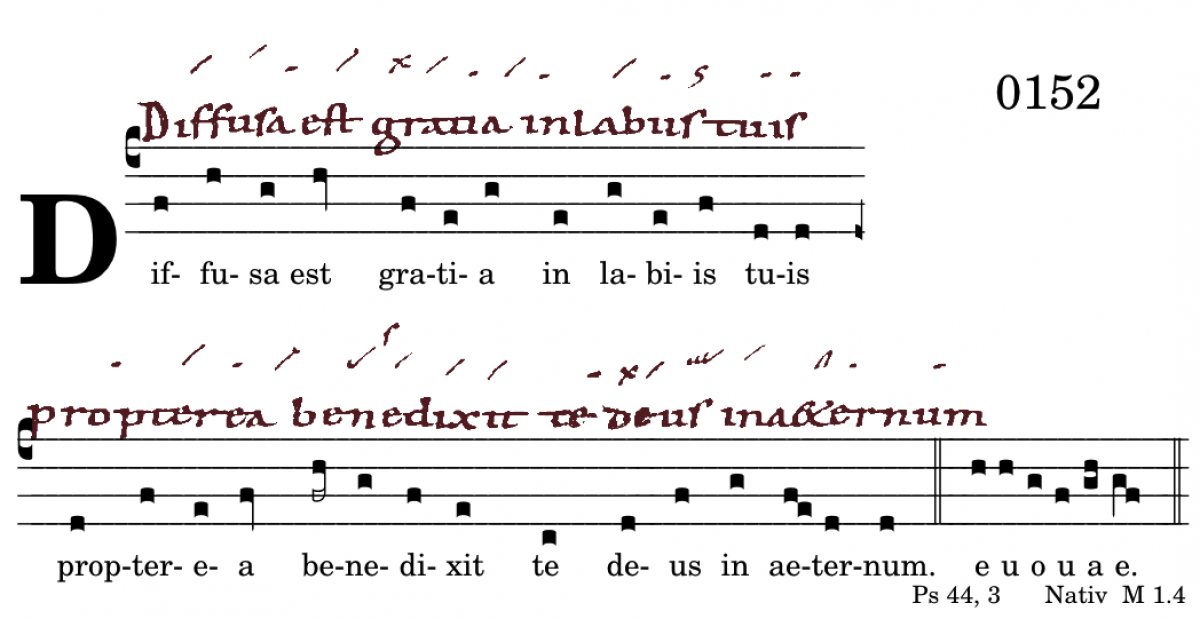Benutzer-Werkzeuge
🔘 IN GR TR AL OF CO xxxxx ✅ 2️⃣ 0️⃣ 3️⃣ 4️⃣ 5️⃣ 6️⃣ 7️⃣ 8️⃣ xxxxx AN RP IV alia
0152 AN Diffusa est gratiaModus 1
↖️
1MED triv 2acc M
exspectare trennt „Diffusa est“ von „gratia“, das selbst untypisch über „mi“ zum „sol“ steigt: colon. Deshalb beginnt
1TER conc außergewöhnlich mit „mi“. Der Oriscus an Stelle einer Virga enttont die Silbe: „in lábis tuis“
2INC asc „benedixit te“ fallende Linie zum „do“: colon.
1TER de3
„de-us“ Virga quilismata. Ist das Quilisma ein Ton? Fo, Ka, Zw schreiben einen Pes „mi-fa“ und übertragen das Quilisma als Ton
Bv schreibt wie so oft eine Clivis „fa-mi“, was durchaus als Verlegenheitslösung verstanden werden kann, aber das Quilisma nicht als Ton überträgt, höchstens die vermeintliche Tonanzahl rettet.
MR, Wc, T1+T2 schreiben für das Qulisma keinen Ton (fa).
● Ausgegossen ist Anmut über deine Lippen,
deshalb segnet dich Gott in Ewigkeit.
● Grace is poured out on your lips,
therefore God blesses you forever.
1MED triv 2acc M
exspectare separates „Diffusa est“ from „gratia“, which itself rises atypically above „mi“ to „sol“: colon. Therefore begins
1TER conc unusually begins with „mi“. The oriscus in the place of a virga deharmonises the syllable: „in lábis tuis“
2INC asc „benedixit te“ falling line to „do“: colon.
1TER de3
„de-us“ Virga quilismata. Is the quilisma a tone? Fo, Ka, Zw write a pes „mi-fa“ and render the quilisma as a tone
As is so often the case, Bv writes a clivis „fa-mi“, which can certainly be interpreted as a solution, but does not transfer the quilisma as a tone, at most saving the supposed number of tones.
MR, Wc, T1+T2 write no tone (fa) for the quilisma.

